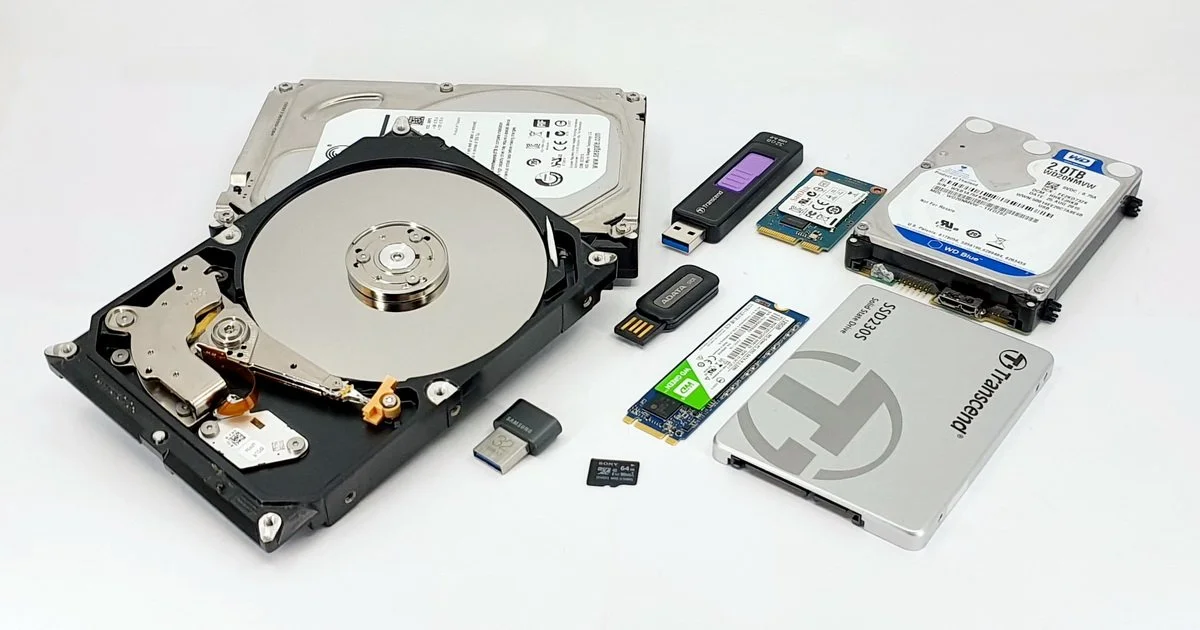a deep dive into understanding the lifespan of your images.
August 4, 2025
Your images are more than files; they capture irreplaceable moments, fuel creative projects, and underpin critical business workflows. Their longevity depends on an intricate chain of hardware, software, and day‑to‑day handling. Storage devices wear out, file formats evolve, and a single misplaced click can erase years of work.
By understanding these underlying pressures, you can establish robust backup routines, plan timely migrations, and, when necessary, turn to proven recovery techniques to restore irreplaceable pixels. This blog traces the full life cycle of a digital image, identifies the hazards that threaten it, and summarizes the professional practices that keep visual data accessible for decades.
the digital image life cycle.
Every digital photo embarks on a predictable journey - from the moment pixels are captured to the point they may need rescue - each stage bringing its own unique set of risks and preservation opportunities.
Creation – A camera, scanner, or design tool generates a file and metadata.
Storage & Access – The file resides on primary media (SSD, HDD, memory card) and gets copied, edited, and shared.
Degradation – Over time, physical wear, logical corruption, and obsolescence creep in.
End‑of‑Life or Recovery – The image is either lost forever or rescued through data recovery techniques.
what really threatens image longevity.
Beyond visible glitches, a host of hidden forces steadily undermine your images. Knowing these threats is the first step toward safeguarding them.
Physical media failure (e.g. worn NAND cells, head crashes) gradually erodes data integrity - often within just a few years of heavy use.
Logical corruption from file‑system errors, interrupted writes, or buggy software can destroy an image in an instant.
Human error, such as accidental deletion or formatting the wrong drive, remains the most common cause of sudden loss.
Environmental factors like heat, humidity, magnetism, or voltage spikes quietly degrade storage devices until a single surge makes them unreadable.
Technological obsolescence creeps in over 5 - 10 years as interfaces and file formats fall out of favor, leaving perfectly healthy bits stranded on outdated media.
early warning signs your images are at risk.
Your storage rarely fails without sending up a flare first. Recognize these early symptoms and you’ll have a critical window to secure backups or seek professional help.
Thumbnails fail to generate or show artifacts.
File copies pause or abort on specific images.
Storage device makes unusual noises, overheats, or disconnects intermittently.
Image editors report “file not recognized”.
If you notice any of these, stop using the device immediately and seek professional help to prevent further damage and increase the likelihood of a successful recovery.
inside a professional image-recovery lab.
Behind the secure doors of a professional recovery facility, specialists combine precision hardware interventions, forensic imaging, and AI‑driven reconstruction to revive lost images.
Forensic Imaging – A sector‑by‑sector clone captures every readable bit without altering the original media.
Hardware‑Level Repairs – Clean‑environment head swaps, PCB replacements, or NAND chip reads on failed drives and flash devices.
File‑System Reconstruction – Algorithms rebuild corrupted directory trees, allocation tables, or log structures.
Bit‑Level Image Repair – Specialized tools patch headers, re‑sequence fragments, and validate checksums to make images viewable again.
AI‑Assisted Image Reconstruction – Modern deep‑learning models infer missing pixel data, denoise artifacts, and upscale low‑resolution images, often restoring photos once deemed unrecoverable.
extending the lifespan.
Preventive care outperforms rescue: apply these proactive best practices to safeguard your images for the long haul.
Adopt the 3‑2‑1 Rule: Keep 3 copies, on 2 different media types, with 1 off‑site or cloud.
Schedule Integrity Checks: Run hash verifications quarterly to detect silent corruption.
Rotate Media: Replace SSDs every 5–7 years; HDDs every 3–5 years depending on duty cycle.
Migrate Formats: Re‑encode legacy formats (e.g., BMP, TIFF) to widely supported, lossless standards like PNG or high‑quality JPEG 2000.
Control Environment: Store archival drives at 20 °C / 68 °F and 40–50 % RH; use surge protection and UPS.
Digital images don’t last forever - but with informed stewardship and expert intervention, they can outlive the hardware that stores them. Build redundancy now, watch for early warning signs, and know where to turn when bytes fade.
If you've lost access to priceless photos or essential image files, Kotar Data Recovery employs clean‑environment hardware repairs, forensic imaging, and AI‑assisted reconstruction to retrieve data from failed drives, corrupted memory cards, and other storage media. Reach out for a complimentary evaluation and a clear, step‑by‑step recovery plan.

